Contents
Guide
Lilian H. Zirpolo received her PhD in art history from Rutgers University in 1994. She is the founder of Zephyrus Scholarly Publications LLC, established in 2013, and is the author of the Historical Dictionary of Renaissance Art (Scarecrow Press, first ed. 2008, second ed. 2016), Historical Dictionary of Baroque Art and Architecture (Scarecrow Press, first ed. 2010, second ed. 2018), and Ave Papa/Ave Papabile: The Sacchetti Family, Their Art Patronage, and Political Aspirations (2005). She is the editor of The Chapels of Italy from the Twelfth to the Eighteenth Centuries: Art, Religion, Patronage, and Identity (2010), The Most Noble of the Senses: Anamorphosis, Trompe-LOeil, and Other Optical Illusions in Early Modern Art (2016), Epistolary Discourse: Letters and Letter-Writing in Early Modern Art (2019), and Esoteric Traditions and Their Impact on Art (2019). She is coeditor (with A. Victor Coonin) of Vanishing Boundaries: Scientific Knowledge and Art Production in the Early Modern Era (2015). She has also published a number of articles, mainly on art patronage and collecting, and book reviews in venues such as the Gazette des Beaux-Arts, Architectura: Zeitschrift fr Geschichte der Baukunst, Drawing, The Womans Art Journal, The Seventeenth Century Journal, Augustinian Studies, Art History, Open Inquiry Archive, and Renaissance Quarterly. She is interested in textile history, particularly the inclusion of textiles in paintings from the Medieval and Early Modern eras. Her History of Quilting: From Ancient Egypt to 18th Century Provence was published in 2016, and her article (De)Constructing the Madonnas Cloth of Honor: Pieced Cloths in Late Medieval Italian Paintings, Their Origins, and Iconographic Significance is forthcoming.
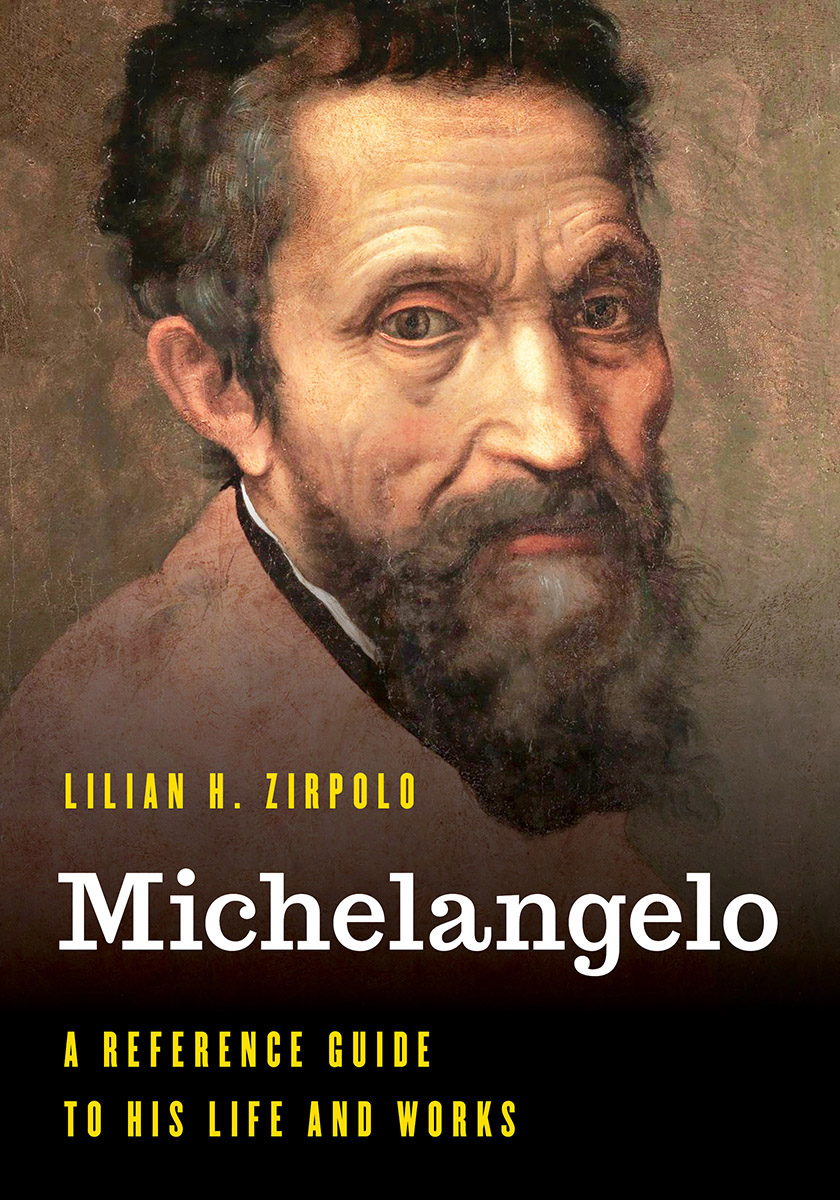
Michelangelo
Significant Figures in World History
Charles Darwin: A Reference Guide to His Life and Works, by J. David Archibald, 2019.
Leonardo da Vinci: A Reference Guide to His Life and Works, by Allison Lee Palmer, 2019.
Robert E. Lee: A Reference Guide to His Life and Works, by James I. Robertson Jr., 2019.
John F. Kennedy: A Reference Guide to His Life and Works, by Ian James Bickerton, 2019.
Florence Nightingale: A Reference Guide to Her Life and Works, by Lynn McDonald, 2019.
Napolon Bonaparte: A Reference Guide to His Life and Works, by Joshua Meeks, 2019.
Nelson Mandela: A Reference Guide to His Life and Works by Aran S. MacKinnon, 2020.
Winston Churchill: A Reference Guide to His Life and Works by Christopher Catherwood, 2020.
Michelangelo: A Reference Guide to His Life and Works by Lilian H. Zirpolo, 2020.
Published by Rowman & Littlefield
An imprint of The Rowman & Littlefield Publishing Group, Inc.
4501 Forbes Boulevard, Suite 200, Lanham, Maryland 20706
www.rowman.com
6 Tinworth Street, London, SE11 5AL, United Kingdom
Copyright 2020 by Lilian H. Zirpolo
All rights reserved. No part of this book may be reproduced in any form or by any electronic or mechanical means, including information storage and retrieval systems, without written permission from the publisher, except by a reviewer who may quote passages in a review.
British Library Cataloguing in Publication Information Available
Library of Congress Cataloging-in-Publication Data
Name: Zirpolo, Lilian H., author.
Title: Michelangelo : a reference guide to his life and works / Lilian H. Zirpolo.
Description: Lanham : Rowman & Littlefield, [2020] | Series: Significant figures in world history | Includes bibliographical references and index. | Summary: Michelangelo: A Reference Guide to His Life and Works covers his life and works. The extensive A to Z section includes hundreds of entries. The bibliography provides a comprehensive list of publications concerning his life and workProvided by publisher.
Identifiers: LCCN 2019056180 (print) | LCCN 2019056181 (ebook) | ISBN 9781538123034 (cloth) | ISBN 9781538123041 (epub)
Subjects: LCSH: Michelangelo Buonarroti, 1475-1564.
Classification: LCC N6923.B9 Z57 2020 (print) | LCC N6923.B9 (ebook) | DDC 759.5dc23
LC record available at https://lccn.loc.gov/2019056180
LC ebook record available at https://lccn.loc.gov/2019056181
 The paper used in this publication meets the minimum requirements of American National Standard for Information SciencesPermanence of Paper for Printed Library Materials, ANSI/NISO Z39.48-1992.
The paper used in this publication meets the minimum requirements of American National Standard for Information SciencesPermanence of Paper for Printed Library Materials, ANSI/NISO Z39.48-1992.
Writing this book on Michelangelo has been a pleasure, but it has also been a challenging undertaking. His art is a feast for the eyes, particularly his sensuous male nudes with their impeccably rendered anatomical details and contorted poses that speak of the gamut of human emotions. The power conveyed by his Moses, through the violent twist of his head and torso and intense gaze, the taut muscles and bulging veins of the David as he anticipates his confrontation with Goliath, and the sensuous, languid stance of the Dying Slave are the elements that prompted Michelangelos contemporaries to call him il Divino (the Divine). His frescoes in the Sistine Chapel in Rome continue to awe, and his architectural designs, such as the vestibule of the Laurentian Library in Florence, are a testament to his ability to invent highly innovative forms.
The challenge of writing a book on Michelangelo is that the history of some of his commissions is highly complex, making it difficult to piece everything together in an intelligible and engaging way, which I hope to have accomplished. Michelangelo left many of his works unfinished, due to political upheaval, the death of a patron, or his own dissatisfaction.
The ultimate example of a commission with a complicated history is the tomb of Pope Julius II, Michelangelos greatest source of frustration. This was a commission received in 1505 from the pope, who wanted a grandiose freestanding monument with at least 40 figures that reflected his magnanimity. But the pope died in 1513, and the tomb was not completed until 1545. After much negotiation with Juliuss family and a number of redesigns, the tomb is but a shadow of the original concept, even though it includes one of Michelangelos most celebrated sculptures, the Moses. It is no longer freestanding, however, and the number of figures is now minimal, with only a few rendered by Michelangelo himself. Further, the Moses is not seen today in the way the sculptor had intended. It was to be viewed from below and from a distance, which explains the deep carving of his facial features and other anatomical details and the elongation of his torso. Yet today, visitors to San Pietro in Vincoli, Rome, where the tomb was installed, view the figure head on, losing the illusion of proper proportions and other details Michelangelo intended.
As the renegotiations continued, Michelangelo carved a number of figures that in the end were not incorporated into the final tomb, so he left them unfinished. Among these are his Slaves, now in the Accademia in Florence, who seem trapped in the stone and struggling to emerge, metaphorically expressing Michelangelos own struggles with the commission, which his contemporaneous biographer, Ascanio Condivi, characterized as the tragedy of the tomb.
My discussions of Michelangelos commissions, including Juliuss monument, incorporate information gleaned from his early biographies and also letters and archival documentation. Michelangelo was the first artist in Western history to have had his biography published during his lifetime, which attests to his fame. In fact, two biographies were published by his contemporaries, one by the aforementioned Condivi and the other by Giorgio Vasari, the Mannerist artist who, like Michelangelo, benefited from Medici patronage. Vasari, in fact, presented Michelangelo as the most important of the High Renaissance masters, greater than Leonardo and Raphael, because, in his view, he was the one to have achieved the heights of perfection in art.




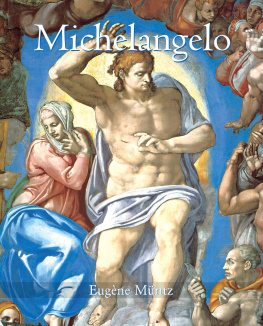
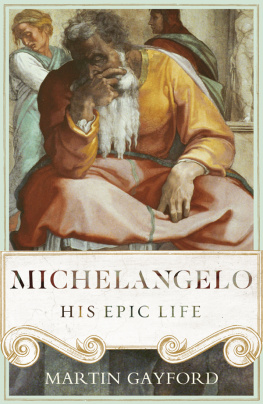
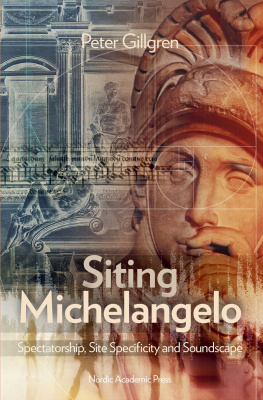
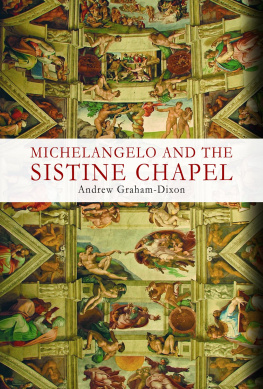

 The paper used in this publication meets the minimum requirements of American National Standard for Information SciencesPermanence of Paper for Printed Library Materials, ANSI/NISO Z39.48-1992.
The paper used in this publication meets the minimum requirements of American National Standard for Information SciencesPermanence of Paper for Printed Library Materials, ANSI/NISO Z39.48-1992.